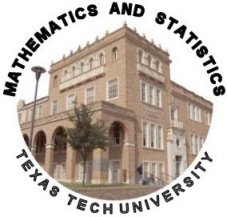Workshops for Students
Fun with Difference Equations
Dr. Raegan Higgins
Abstract: This will a brief and down-to-earth introduction to difference equations.
We will introduce a variety of basic sequences. We will see how to establish recursive
relationships and in some instances, see how to use these recursive relationships to
establish explicit formulas.
Optimization: the art of making things better through math
Dr. Victoria Howle and Dr. Kevin Long
Abstract: What do protein structure, investment planning, engineering design, delivery
truck routing, and soap bubbles all have in common? All are problems in
optimization, the branch of mathematics studying how quantities take on their
minimum or maximum values. For example, a trucking company will want to
deliver as many items as possible while using as little fuel and driver time
as possible, and a building engineer will want to minimize construction costs
subject to safety code constraints. Remarkably, many problems in the natural
world are also fundamentally based on optimization: for example, proteins
will spontaneously fold into a configuration that minimizes a quantity called
free energy, and soap bubbles will naturally take on a state of minimum
energy.
We'll show some examples of optimization in the real world, and then talk
about how one goes about computing the optimal value of a mathematical
function.
Mathematics and Biology
Dr. Sophia Jang, Texas Tech University
Abstract: This workshop will introduce students to how
mathematics can be applied to study biology. We will look at how
the long time trend of a single population and of population
interaction can be described by some simple maps. We will explore
the cyclic behavior of the predator-prey interaction and of
competition exclusion for two competing populations.
Mathematics of 3-D Animation
Dr. Chris Monico
Abstract: More and more movies and television shows make use of Computer Generated Imagery (CGI).
Some movies, like Wall-E,
were created entirely by computer. It might be surprising to learn just how much mathematics goes into this process.
In this talk, we'll give a brief overview of the process of 3-D animation and some of the mathematics behind it.
Is the Universe Curved?
Dr. Magdalena Toda
Abstract: This is a brief introduction to some theories which mean to confirm or infirm the belief
that the universe is curved. We will discuss the mathematical ideas behind the notion of curvature,
and we will look at some elementary examples which make this notion more approachable.
So You Want to be a Statistician?
Dr. Alex Trindade
Abstract: This will be an overview of what statistics is, how statistics is
present behind the scenes in every field of scientific endeavor, what
statisticians do, some projects I've worked on, and how to become a
statistician.
|

